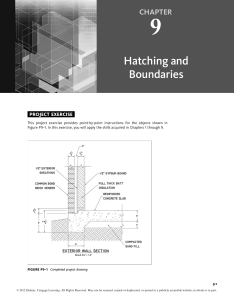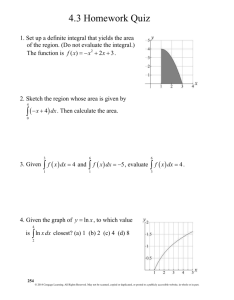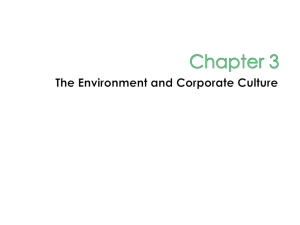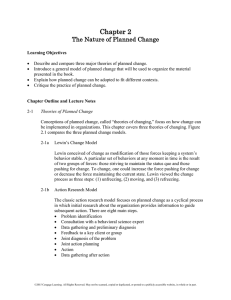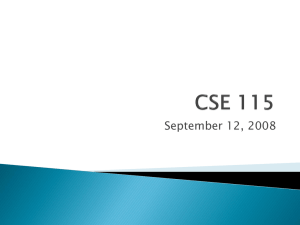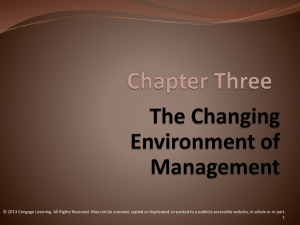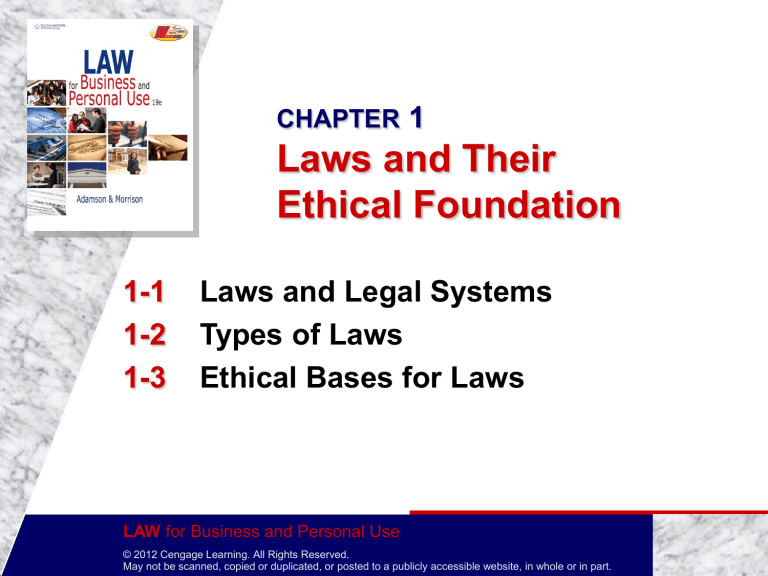
CHAPTER 1 Laws and Their Ethical Foundation 1-1 1-2 1-3 Laws and Legal Systems Types of Laws Ethical Bases for Laws LAW for Business and Personal Use © 2012 Cengage Learning. All Rights Reserved. May not be scanned, copied or duplicated, or posted to a publicly accessible website, in whole or in part. 1-1 Laws and Legal Systems GOALS Explain the stages in the growth of law Describe the differences between common law and positive law Identify the origin of the U.S. legal system LAW for Business and Personal Use Chapter 1 © 2012 Cengage Learning. All Rights Reserved. May not be scanned, copied or duplicated, or posted to a publicly accessible website, in whole or in part. SLIDE 2 WHAT IS LAW? Stages in the growth of law Common law versus positive law LAW for Business and Personal Use Chapter 1 © 2012 Cengage Learning. All Rights Reserved. May not be scanned, copied or duplicated, or posted to a publicly accessible website, in whole or in part. SLIDE 3 CHECKPOINT How does common law differ from positive law? LAW for Business and Personal Use Chapter 1 © 2012 Cengage Learning. All Rights Reserved. May not be scanned, copied or duplicated, or posted to a publicly accessible website, in whole or in part. SLIDE 4 WHAT IS THE ORIGIN OF THE U.S. LEGAL SYSTEM? English common law King’s Bench Jury An example Advantages of English common law Equity: An alternative to common law LAW for Business and Personal Use Chapter 1 © 2012 Cengage Learning. All Rights Reserved. May not be scanned, copied or duplicated, or posted to a publicly accessible website, in whole or in part. SLIDE 5 CHECKPOINT On which early legal system is the U.S. legal system based? LAW for Business and Personal Use Chapter 1 © 2012 Cengage Learning. All Rights Reserved. May not be scanned, copied or duplicated, or posted to a publicly accessible website, in whole or in part. SLIDE 6 1-2 Types of Laws GOALS Identify the four sources of law Discuss how conflicts between laws are resolved Compare and contrast criminal and civil law, and substantive and procedural law LAW for Business and Personal Use Chapter 1 © 2012 Cengage Learning. All Rights Reserved. May not be scanned, copied or duplicated, or posted to a publicly accessible website, in whole or in part. SLIDE 7 WHAT ARE THE SOURCES OF LAW? Constitutions Statutes Ordinances Case law Administrative law LAW for Business and Personal Use Chapter 1 © 2012 Cengage Learning. All Rights Reserved. May not be scanned, copied or duplicated, or posted to a publicly accessible website, in whole or in part. SLIDE 8 CHECKPOINT What are the five sources of law? LAW for Business and Personal Use Chapter 1 © 2012 Cengage Learning. All Rights Reserved. May not be scanned, copied or duplicated, or posted to a publicly accessible website, in whole or in part. SLIDE 9 WHAT HAPPENS WHEN LAWS CONFLICT? Constitutions and validity Statutes and validity Administrative regulations and validity Case law and validity LAW for Business and Personal Use Chapter 1 © 2012 Cengage Learning. All Rights Reserved. May not be scanned, copied or duplicated, or posted to a publicly accessible website, in whole or in part. SLIDE 10 CHECKPOINT Which source of law in the United States is the highest authority? LAW for Business and Personal Use Chapter 1 © 2012 Cengage Learning. All Rights Reserved. May not be scanned, copied or duplicated, or posted to a publicly accessible website, in whole or in part. SLIDE 11 WHAT ARE THE MAIN TYPES OF LAWS? Civil and criminal laws Procedural and substantive laws Business law Uniform business laws LAW for Business and Personal Use Chapter 1 © 2012 Cengage Learning. All Rights Reserved. May not be scanned, copied or duplicated, or posted to a publicly accessible website, in whole or in part. SLIDE 12 CHECKPOINT Compare and contrast criminal and civil law and substantive and procedural law. LAW for Business and Personal Use Chapter 1 © 2012 Cengage Learning. All Rights Reserved. May not be scanned, copied or duplicated, or posted to a publicly accessible website, in whole or in part. SLIDE 13 TYPES OF LAW Constitutional law Based on constitutions Statutory law Enacted by legislative bodies Administrative law Rules and regulations made by administrative agencies Civil law Addresses wrongs done to individuals Criminal law Addresses wrongs done to society Procedural law Deals with methods of enforcing legal rights and duties Substantive law Defines legal rights and duties Business law Rules that apply to business situations and transactions LAW for Business and Personal Use Chapter 1 © 2012 Cengage Learning. All Rights Reserved. May not be scanned, copied or duplicated, or posted to a publicly accessible website, in whole or in part. SLIDE 14 1-3 Ethical Bases for Laws GOALS Define ethics Compare and contrast consequences-based ethics with rule-based ethics Discuss ways in which ethics are reflected in laws LAW for Business and Personal Use Chapter 1 © 2012 Cengage Learning. All Rights Reserved. May not be scanned, copied or duplicated, or posted to a publicly accessible website, in whole or in part. SLIDE 15 ETHICS AND THE LAW Basic forms of ethical reasoning Consequences-based ethical reasoning Rule-based ethical reasoning Ethics reflected in laws LAW for Business and Personal Use Chapter 1 © 2012 Cengage Learning. All Rights Reserved. May not be scanned, copied or duplicated, or posted to a publicly accessible website, in whole or in part. SLIDE 16 CHECKPOINT In the U.S. system of democracy, how are ethics reflected in laws? LAW for Business and Personal Use Chapter 1 © 2012 Cengage Learning. All Rights Reserved. May not be scanned, copied or duplicated, or posted to a publicly accessible website, in whole or in part. SLIDE 17 PREVENT LEGAL DIFFICULTIES As a citizen . . . When moving to a new location, find out how the laws in that county or city may affect you. Before beginning a new business, consult an attorney to learn about city, county, state, and federal laws and how they may affect you. Study business law so you can become an informed citizen who is knowledgeable about legal matters. Continued on the next slide LAW for Business and Personal Use Chapter 1 © 2012 Cengage Learning. All Rights Reserved. May not be scanned, copied or duplicated, or posted to a publicly accessible website, in whole or in part. SLIDE 18 PREVENT LEGAL DIFFICULTIES Recognize that fulfilling your duties as a citizen is the greatest guarantee of your maintaining your individual rights and liberties. These duties include: The duty to obey the law. The duty to respect the rights of others. The duty to inform yourself on political issues. The duty to vote in elections. The duty to serve on juries if called. The duty to serve and defend your country. The duty to assist agencies of law enforcement. LAW for Business and Personal Use Chapter 1 © 2012 Cengage Learning. All Rights Reserved. May not be scanned, copied or duplicated, or posted to a publicly accessible website, in whole or in part. SLIDE 19
